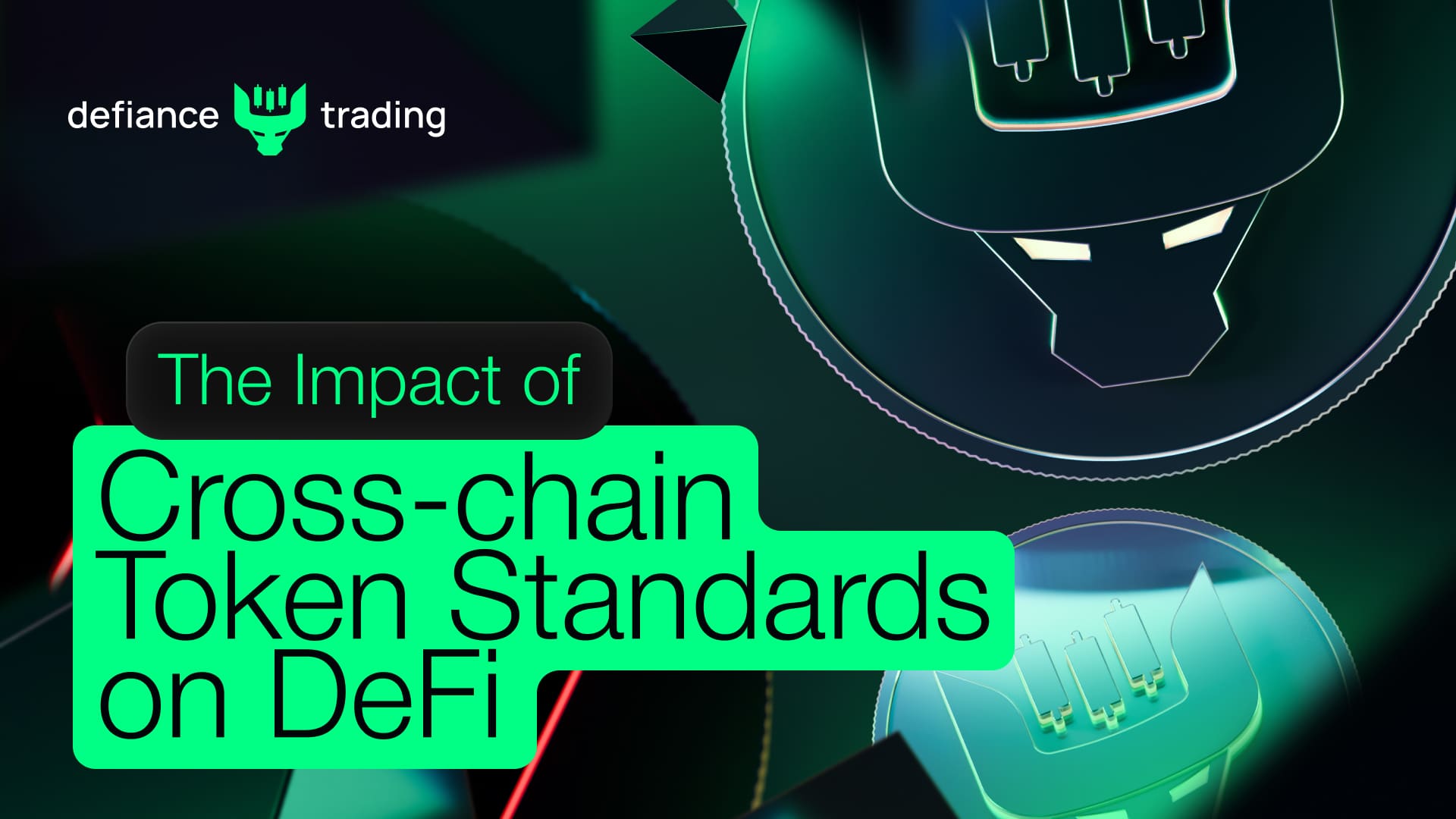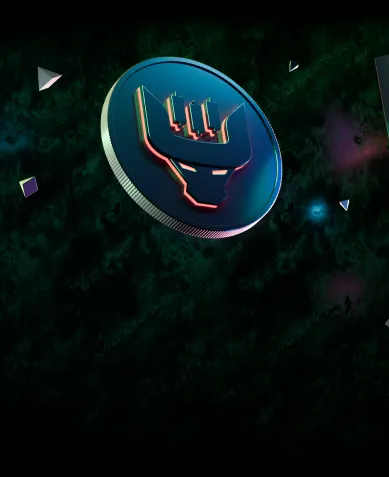The Impact of Cross-chain Token Standards on DeFi

Blockchain ecosystems no longer feel like prison yards because of cross-chain token standards. If you think the grass is greener on the other side, you can have a look. These novel token standards go a step further to predict how a token behaves in a non-native environment and help developers build beyond borders unthinkable. Now, a multi-chain future is vivid, and users can traverse the blockchain without getting stuck.
In this article, we will explore token standards at various levels, the impact of cross-chain token standards on DeFi, current challenges and considerations, and what the future holds.
Let’s dive in!
What are token standards?
In real life, you can put any denomination in a wallet: regardless of whether it is dollars, pounds, euros, or yen. However, the story is different with digital assets. Each token is created with a unique code, which makes it specific to a particular ecosystem. Think of a token standard as a tool kit. It is designed to fit different tools in particular areas.
A token standard is a set of rules governing the creation and use of digital assets. No one size fits all.
So, why token standards?
- They create consistency for tokens to work efficiently across trading platforms, exchanges, and protocols.
- It also prevents incidences of missing funds or difficulty in splitting funds into projects.
- When projects and wallets can interact seamlessly, the blockchain becomes less mysterious for users who desire to get on board.
- Besides simplifying user experience, interconnectivity from token standards breeds innovation and development on Web3.
- It provides a framework for developers. For example, developers can reuse codes from ERC-20 and ERC-721. They can execute their brainchild with certain prompts. Having a template saves builders from spending time and resources on writing code from scratch and allows them to imbibe basic token attributes.
- Furthermore, with the fundamentals taken care of, developers can focus on unique aspects including launch timelines and security updates.
Without reliable frameworks, tokens exist on islands. Many will become hard to use, insecure for transactions, and difficult to pitch for adoption.
The emergence of cross-chain token standards
In the past, blockchains stood alone. Bitcoin swore to change how we spend money and become the next digital gold. Ethereum stormed the space with a different approach. It introduced building on the blockchain, and excitement about having a legacy on-chain reached a fever pitch.
However, Ethereum didn’t leave this crowd to their devices. With a large number of their users having no idea how to create a token they showed them how to do it by setting a standard. What about unique tokens, which are one-of-a-kind? They also set a standard and NFT grew into a sector. Those guidelines, known as token standards, were meant for Ethereum and associated blockchains.
Although, with compatibility issues springing up everywhere, developers cooked up cross-chain token standards. With it, they could monitor their token’s performance on various networks. Projects using this update can access deeper liquidity, facilitate extensive asset transfers, and scale operations without collapse.
Below are some cross-chain token standards defining how tokens move across networks:
- Cosmos’ Inter Blockchain Communication (IBC) Protocol
- Polkadot’s Cross Census Messaging Protocol (XCM)
- Layerzero’s Omnichain Fungible Token (OFT)
- Chainlink’s Cross Chain Token (CCT)
How Cross-Chain Token Standards Impact DeFi
DeFi is the biggest winner from cross-chain standards. How do these guidelines help the burgeoning sector?
Developers can leverage the strengths of multiple blockchains.
Everybody wants great tech for themselves, and when a mind-blowing integration like Chainlink’s CCT appears, ecosystem core developers crave such in their domain. Today, you will agree that the growth of a chain largely relates to how well the developer community thrives. This relationship benefits Chainlink too. The good performance of these integrations is in the best interest of their network. Teams can give feedback and suggest reforms to optimize performance.
Unified Liquidity
When you can move tokens across blockchains without consulting liquidity pools, you have solved fragmentation. Cross-chain bridges are simpler to navigate. If you need a token from Bitcoin on Ethereum, the process is risk-free and secure. Users can now explore opportunities to lend, borrow, and stake anywhere — as they please.
Scalability
Cross-chain token standards provide frameworks that track token behavior and asset transfers (how people interact with tokens).
This information helps decentralized finance projects to build smart, beyond a single chain. Goodbye to transaction bottlenecks, and welcome to high throughput and improved user experience.
By creating channels for inflows and outflows, cross-chain token standards enable DeFi platforms to hold enormous transaction volumes daily. DApps can draw liquidity from other networks to ease congestion during peak transaction windows for fast and low-cost swaps.
Reduction in costs
Now, there’s unity in cash flow. But these standards don’t stop there. They provide mechanisms like token lock, mint, and burn to prevent duplicate transactions. Developers can deploy apps that are self-sustaining, enough to avoid errors leading to skyrocketing slippage, and jaw-dropping gas fees.
Users can do all things DeFi with confidence in a liquidity that never runs dry, so their pockets won’t. Imagine the many, little fees you’d pick up while dealing with a thousand wrapped tokens or when Binance slams you with a minimum amount. Never mind; it’s a new dawn with cross-chain token standards.
Challenges and considerations for Cross Chain Token Standards Moving Fore
Despite how revolutionary cross chain token standards seem, they can improve in the following areas;
Security Risk
There’s a need for more effort to plug loopholes often exploited by hackers. A single-point breach can expose key storage and lead to the draining of uncountable wallets. Flaws in smart contracts and network layers will increase industry confidence in cross-chain bridges.
Regulatory limitations
Cross-chain bridges make paths where none existed. It is reasonable to think they will become stomping grounds for bad actors. Regulatory bodies will demand compliance with anti-money laundering and securities laws, especially in the United States. Projects in this space must design protocols heavy on decentralization and continue to operate in line with regulations.
Difficulty for users
Cross-chain bridges mean multiple steps. You’d have to lock tokens on one ecosystem, then go to another and mint your desired token. Hopping from one page to another can drain the average user, who is on web3 to build wealth. The process leads to abandoned transactions and reduced trading volumes. These results affect the ecosystem’s rank.
If you didn’t know, high trading volumes draw liquidity. So, this issue can cause more problems down the line. Decentralization?
Yes. Nevertheless, builders should make it easy for even a Grandma to find her way.
Future predictions about Cross-chain token standards.
- As developers and projects put their best foot forward, you can expect significant solutions to existing challenges. Expect robust protocols, capable of interoperability of more blockchains. This ability will blur the lines between individual blockchain and level the playing field in DeFi.
- Another expectation is how cross-chain solutions work with Layer 2 blockchains. L2s, primed for speed and efficiency, can speed transactions in cross-chain bridging and make DeFi more appealing for Web3 enthusiasts.
- A way to keep cross-bridging in check is to put more eyes on activities and incentivize more people to give suggestions. It is too late when regulators come knocking. Why not create Decentralized Autonomous Organizations (DAOs) within these protocols?
Governance, from an unbiased crowd, can help cross-chain protocols operate safely. With this method, users have a say in the progress and direction of their protocol. This arrangement translates to a satisfied consumer base and attracts more users.
Conclusion
The origin story of token standards started with Ethereum. At the time, the ecosystem drew a fine line to direct how different tokens are used. However, more blockchains emerged and users desired to test fresh waters. However, the process was hectic. Some people dropped crypto, never to look back. To keep Web3 converts, builders tinkered and innovated a means to help carry assets over various networks. Right now, there are more than a handful of cross-chain token standards.
Yet, shortfalls persist. Hopefully, we will witness fresh projects that connect more networks and put their communities at the center of decision-making.
For more updates, visit our WEBSITE today!
Ready to Defy the Odds?
Become part of a growing movement
